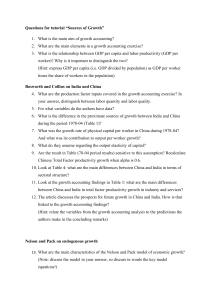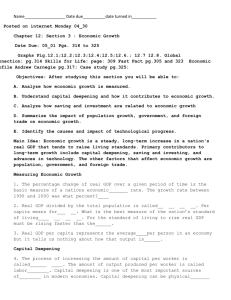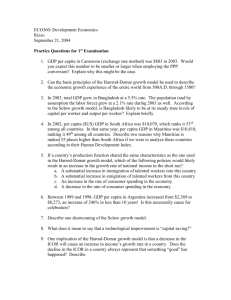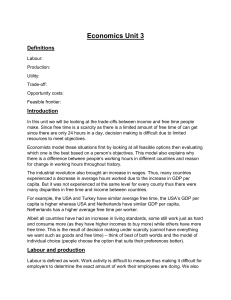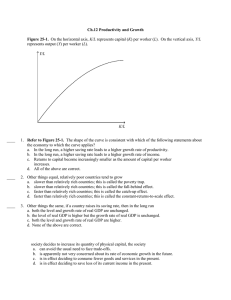In-Class Notes - Economic Growth
advertisement
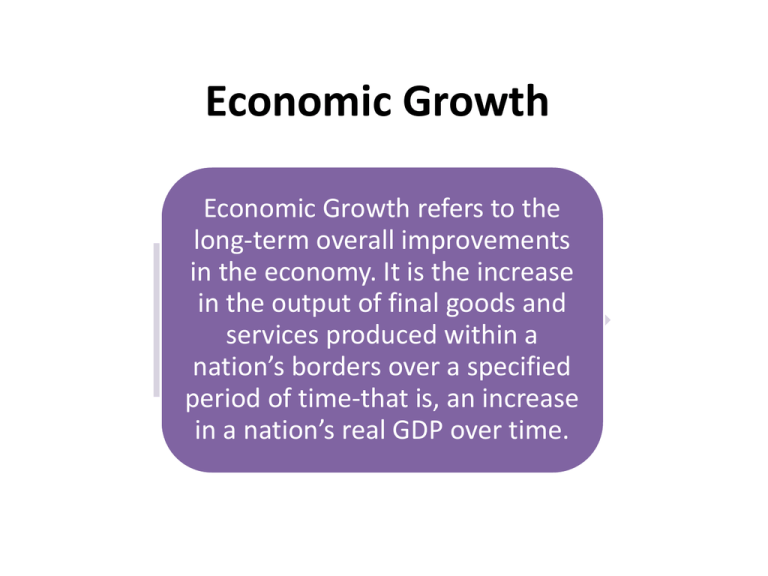
Economic Growth Economic Growth refers to the long-term overall improvements in the economy. It is the increase in the output of final goods and services produced within a nation’s borders over a specified period of time-that is, an increase in a nation’s real GDP over time. Importance of Economic Growth To account for population increase, economists usually measure economic growth in terms of per capita increase in real GDP. Real GDP Per Capita is an increase in the real dollar value of all final goods and services that are produced per person for a specified period of time. One of the six major goals of the U.S. economy. Increasing the standard of Living: consumers having more money to spend increases supply of goods and services. More money in the economy lessens domestic problems like poverty, crime.. Competing in the Global Market: Increase in technology and industrializatio n creates greater GDP. Increasing Domestic Resources: As people’s incomes increase, they generally pay more in taxes which helps pay for national defense, education, fire and police protection. Requirements for Economic Growth Natural Resources: Access to plentiful resources such as; timber, coal, natural gas and minerals. Human Resources: A nation’s capacity to produce goods and services. Economists examine the amount of labor input that is available. Capital Resources: The more farmland, machines, factories, and production plants in a nation, the more it is likely to produce and the more its economy will grow. Entrepreneurship: New businesses create and sell new products and provide new markets and jobs for economic growth. Poll Time Increasing Productivity Labor productivity: A measure of how much each worker produces in a given period of time, usually one hour. Productivity growth: An increase in the output of each worker per hour of work. Impact on Productivity Growth Technological Advances: Invention and innovation, new knowledge and new ways of applying this knowledge are the leading sources of productivity growth. Capital Deepening: When the amount of a nation’s capital goods increases faster than the size of that nation’s workforce, capital deepening an increase in the amount of capital goods available per worker results. Educated and Skilled Labor Force: As the level of skill required to perform certain jobs increases, employees must continue to learn and to improve their skills to keep their jobs. Additional Factors Many factors other than education can affect productivity levels such as: • Attitudes and motivation levels of workers. • Dedication to the job. • Loyalty to a company. Highly dedicated workers produce more, as do workers who enjoy their jobs. Poll Time




